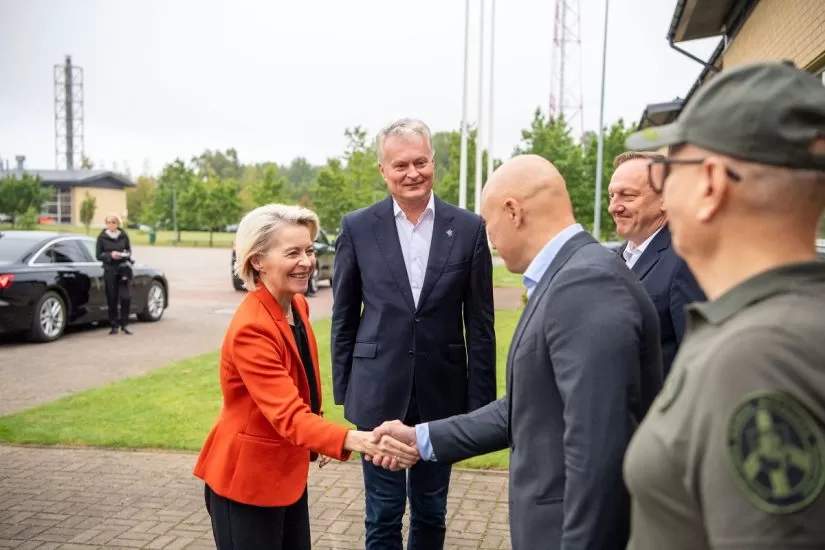
EU Chief Points Out Border Defense While Stopping By Lithuania
The meeting between von der Leyen, Lithuanian President Gitanas Nausėda, and a delegation that included representatives from the Ministries of Defense, Interior, and other institutions unfolded right at the doorstep of Lithuania's border with Belarus.
The talks shone a light on the collaborative spirit of the
Baltic states and Poland as they band together to safeguard the
eastern flank of NATO and the European Union.
The initiative is all hands on deck with coordinated defense
planning, operational cooperation, and a seamless fit into NATO
defense strategies, spanning a whopping 2,300 kilometers.
Lithuania, Latvia, and Estonia are developing the“Baltic Defense Line” while simultaneously working with Poland on the“East Shield” project to enhance security in the Suwałki corridor.
Lithuania's Deputy Defense Minister Tomas Godliauskas presented the country's border defense capabilities to von der Leyen, outlining steps being taken to deter and prevent potential threats, as well as measures to reinforce the security of critical corridors. He stressed that ensuring border security has become a priority for the European Union, with joint efforts aimed at securing EU funding for counter-mobility and border defense measures.
Godliauskas underscored the collective accountability of
Lithuania, Latvia, Estonia, and Poland in safeguarding the European
Union's external boundary.
He articulated that synergistic collaboration in fortifying defense
infrastructure exemplifies a robust dedication to preserving the
stability of Europe.
The quartet of nations is engaging in synergistic collaboration to
optimize funding for the SAFE program and anticipates that
forthcoming EU fiscal architectures will allocate capital for
border defense strategies.
Strategic initiatives encompass collaborative synergies with
Finland, facilitating an integrated defense framework for the
entirety of the eastern frontier.
Godliauskas underlined that border defense goes beyond physical barriers, encompassing the combined efforts of armed forces, government institutions, local authorities, and national defense industries.
Lithuania continues to expand its counter-mobility measures, including obstacles at border crossing points, fortified defense positions, and the development of engineering facilities to store barriers such as“dragon's teeth,” hedgehogs, concertina wire, and concrete blocks.
Additional strategies encompass bolstering fluvial transit
points, sustaining sylvan buffer zones, and augmenting tactical
excavation proficiencies.
The synergistic initiatives are designed to establish a robust
defensive architecture that amalgamates terrestrial, maritime, and
aerial capabilities, with a pronounced focus on unmanned aerial
vehicle operations, anti-drone frameworks, reconnaissance, and
electronic combat strategies.
As articulated by Godliauskas, recent occurrences highlight the
critical necessity of comprehensive integration of diverse
operational capabilities to optimize efficacy in border security
measures.

Legal Disclaimer:
MENAFN provides the
information “as is” without warranty of any kind. We do not accept
any responsibility or liability for the accuracy, content, images,
videos, licenses, completeness, legality, or reliability of the information
contained in this article. If you have any complaints or copyright
issues related to this article, kindly contact the provider above.


















Comments
No comment